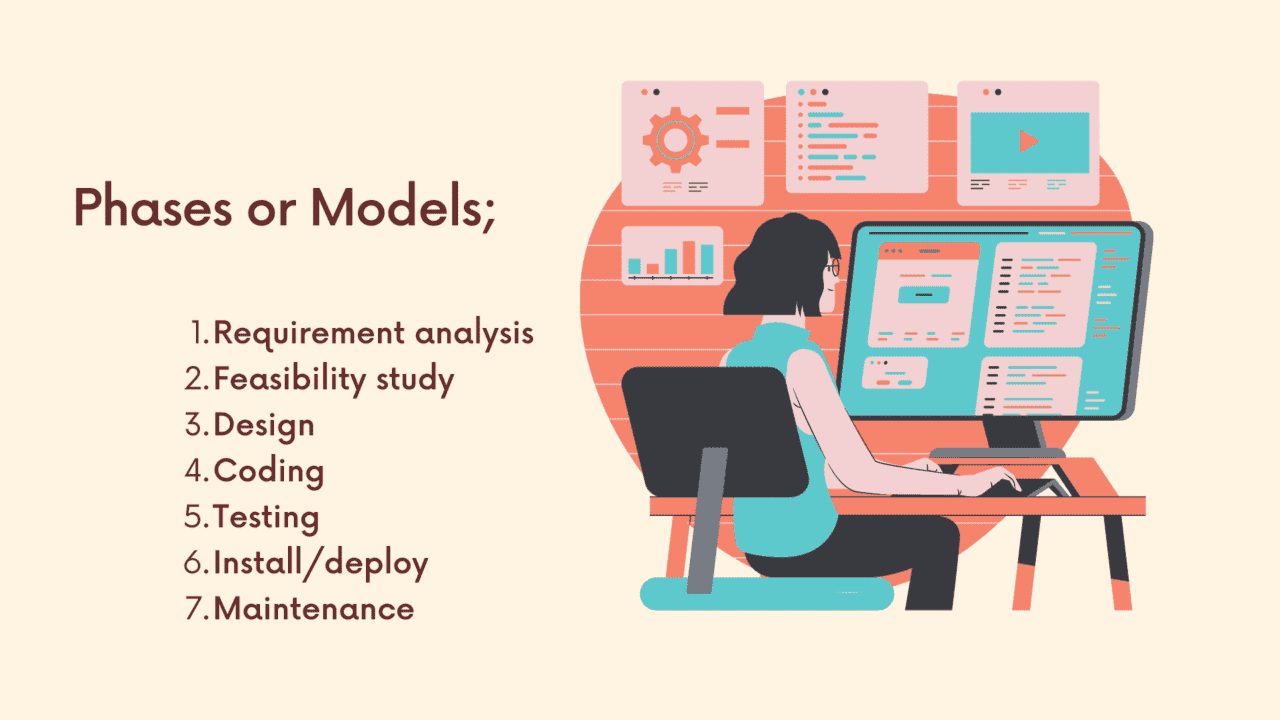What is the Software Development Life Cycle Agile and 7 Phases with Models? Software development lifecycle refers to the systematic process of building software that ensures that the software developed is of the right quality and consistent with the functional requirements. The details are given on exactly what expect so that the customer can get a program that works according to their expectations. The process of developing the software should complete within the predetermined budget and time. Also, The entire project lifecycle divides into phases each outlining the deliverables that should be met before the project moves to a higher hierarchy of development.
Here is the article to explain, 7 types Phases and Models of Software Development Life Cycle Agile
The process of software development divided into stages are as listed and illustrated below:
- Requirement analysis
- Feasibility study
- Design
- Coding
- Testing
- Install/deploy
- Maintenance

Requirement Analysis;
The requirement phase is the first phase in the development of software; which is usually managed by the senior members of the team in collaboration with the stakeholders’ industry experts. Also, The senior team members assure the stakeholder of the viability of the project as they analyzed all the risks that involve. At this stage, the team requires to come up with detailed and concise requirements; which will help the team members to finalize the work within the required timeline.
Feasibility Study;
In this stage, the steps required in bringing the project to life define and document. The software requirement specification process conduct includes all the parameters that should consider in the design during the project lifecycle. On feasibility, five parameters consider. Also, These parameters are economic, legal, operation, technical, and scheduling.
Design;
This stage involves the preparation of documents as per the specification so that what expects comes out so that the coding process can process from here. The overall look of the program visualizes at this stage.
Coding;
Coding at this point, the developers are preoccupied with writing the codes. The codes write into units, and each coding task assigns to a specific developer. Also, The coding guidelines have to follow in this stage and the application of the relevant programming tools. As well as This is the long and most time-consuming phase of software development.
Testing;
Testing is complete after the coding process is complete. The software deploys to the testing environment where the team starts testing the functionality of the system guided by the functional requirements of the customers or the stakeholders. The purpose of this phase is to ascertain that the software is performing as expected. Also, This is an iterative process as stakeholders get to interact with the program; and, they take it to the developer for modification. The process continues until the software is performing as per the expectations.
Deployment/Installation;
Next is the deployment of the software. Also, Deployment performs with authority from the project manager after they have ascertained that the project can work as required.
Maintenance;
Deployment gives the customer the chance to use now the software that has been developed. However, the development team does not get off the scene as they will require to be there in case some bugs need fixing arising from scenarios that were not dealt with during the testing stage. In addition, they may require to do a system upgrade to a new version of the software with time as well as enhance new features of the software. As well as All this produces in the maintenance phase of software development.
Just like the work breakdown structure, the software design lifecycle is vital in the development stage of the software in that it offers the basis for project planning, cost estimation, and scheduling. It also provides a framework for the different tasks and deliverables and provides a mechanism for tracking the progress of the project.
References; Work Breakdown Structure (WBS) in Software Development. Retrieved from https://www.ukessays.com/essays/project-management/work-breakdown-structure-wbs-in-software-development-4526.php?vref=1

